Let’s take a moment and pretend that the earth was turning itself into a living creature. It might want a nervous system – much like an electric power grid. It would want ways to eat – to absorb energy from the environment – like wind and solar power. It’d need brain cells and memory, much like data centers. As well, it’d want a way to store energy, like big batteries – and maybe, we’d called these places the “powerhouse of the planet”. And so much more would be needed, of course, to make Gaia come awake.
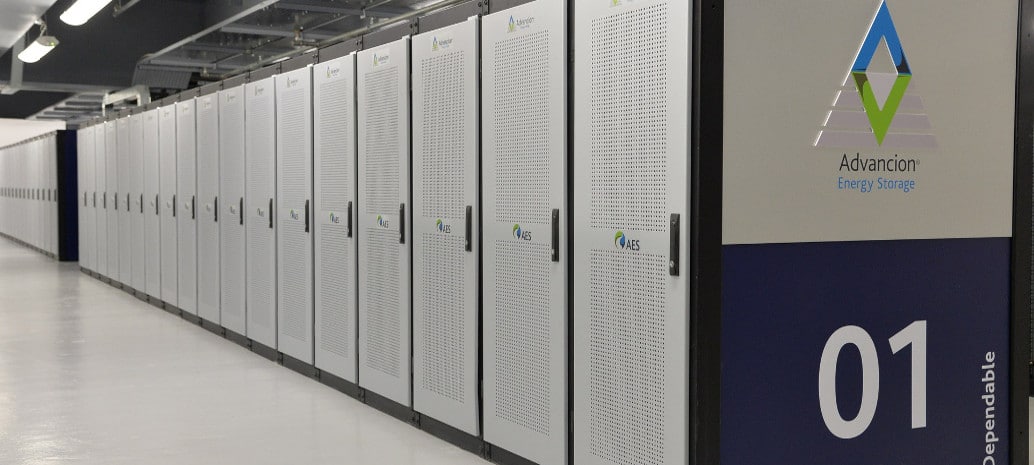
AES has broken ground on a 100 MW / 400 MWh battery storage system in Long Beach, California that will feed the Southern California Edison (SCE) region in a 20 year power purchase agreement. The facility was specifically procured to provide power at peak times of the day, offer local capacity and ramping/ancillary services. Construction is expected to complete by the end of 2020, and will complement a new air cooled 1 GW gas facility that is replacing an older ocean cooled system.
And while pv magazine USA didn’t read the documentation regarding the procurement process for the facility to understand what this plant competed against, John Zahurancik, Chief Operating Officer of Fluence noted,
Alamitos energy storage will stand as the first of a new generation of energy storage procured as stand-alone alternatives to new gas plants.
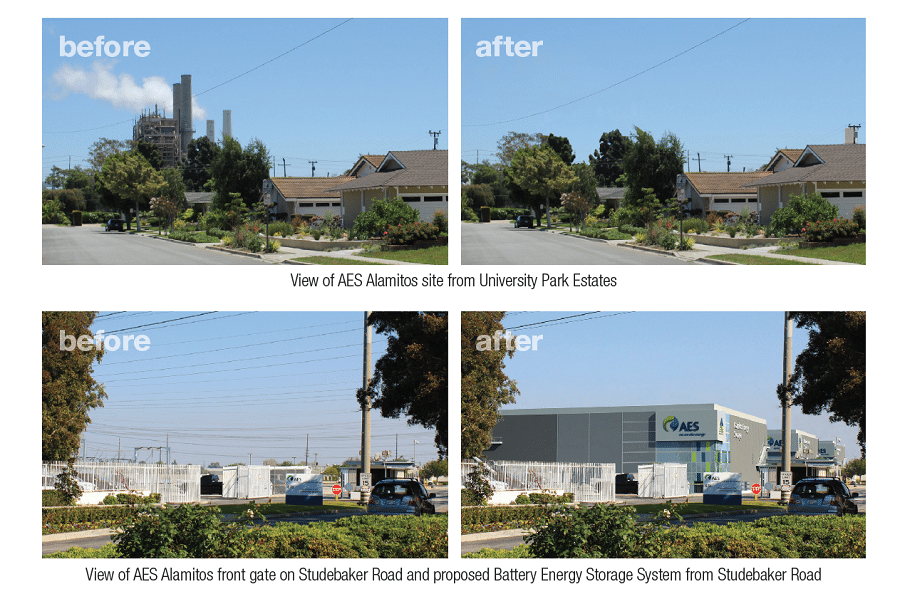
The facility will house the Advancion 5 battery series, supplied by Fluence. The hardware, as per code requirements set forth, must be built in a “campus like manner” per Stephen O’Kane, Vice President at AES Southland in a conversation with pv magazine USA. As noted in the images and renderings provided by AES above in presentations during the development phases, you can see an old gas plant disappearing as well a regular looking corporate building arising.
O’Kane noted that while they did know from the start of the project that this facility would be built as a building, the battery is of a size where that it can financially support the more expensive infrastructure of a building. It was suggested that in other locations we might see facades built around these facilities instead of the industrial shipping container look.
And while no images were provided of what the inside of the structure would look like (though it might look like the image near the top of this article – or two images down from here),via a tweet of the Hawaii 28 MW PV + 100 MWh storage project, we get a nice look of something that could easily be mistaken for racks of computers when the energy storage containers are opened:
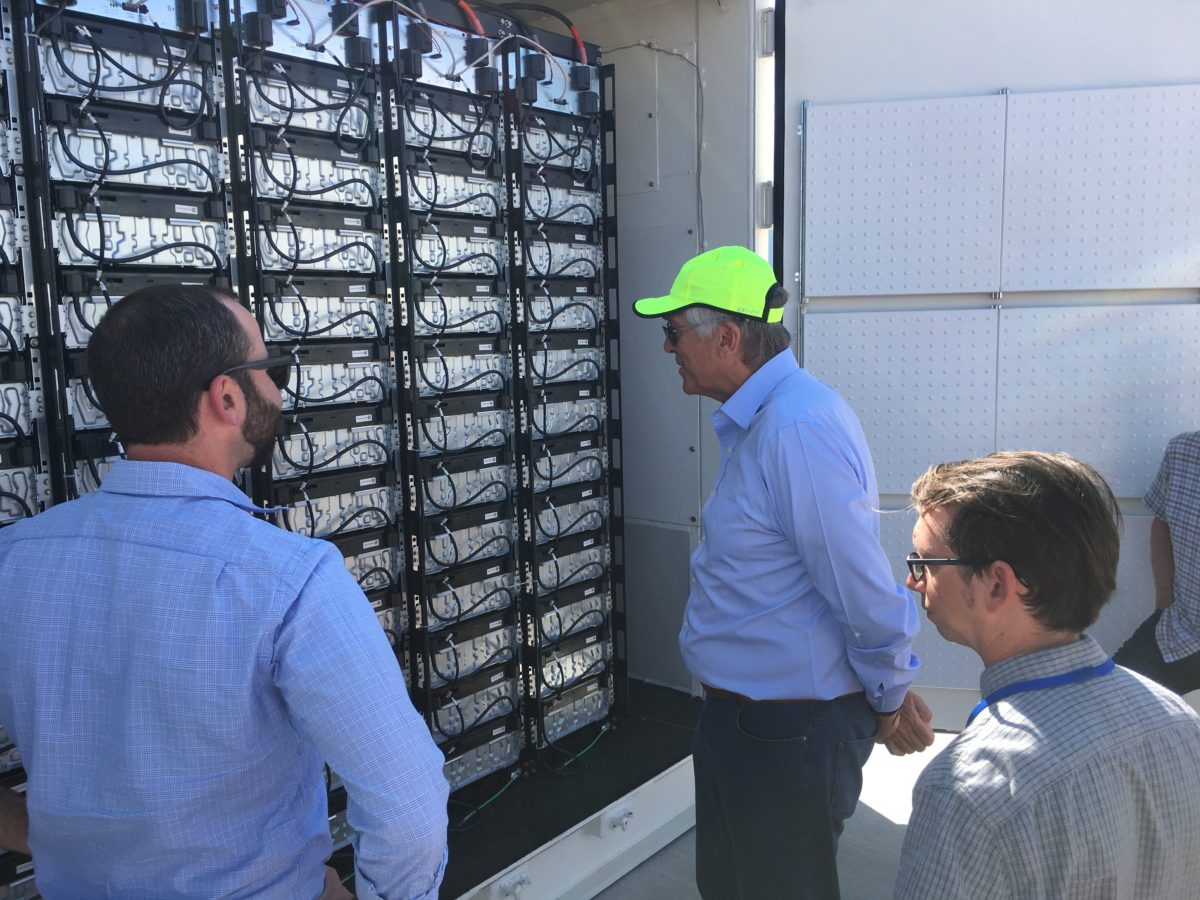
The structure will be separated into three or four fire walled zones. It was suggested that the safety systems such as ventilation and sprinklers might even be stronger in a structure like this which allowed designed from ground up, versus the needs to fit hardware inside of the fixed size of a shipping container. O’Kane noted
Whereas, when you build a data center, you’re thinking about saving the hardware and its data. But we want no promulgation of thermal issues, they want to save their data centers, same things with our batteries. You’ve got systems with every single node that can be shut off, with even more safety systems to make sure it doesn’t spread.
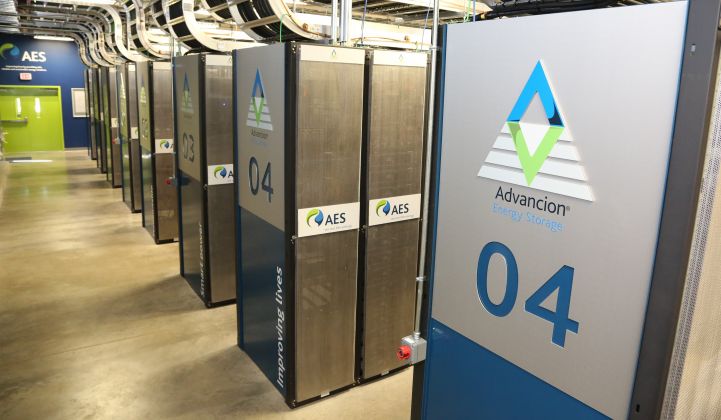
Talking with O’Kane, we got to philosophizing about the evolution of our energy systems – and of course this author tossed up the Gaia hypothesis from the beginning of this article. O’Kane noted that there is in fact a rising intelligence in our systems,
Its evolving toward much more smarts, using artificial intelligence and system to manage our power grid, deploying storage systems all over to be more flexible, from behind the meter, with demand side management, intermittent and their need the control systems, and of course using big data and AI to manage it all.
And if it turns out that we can deploy energy storage facilities into urban areas, and knock down gas plants, then we should expect to see many more happen (especially if there are 728 GWh of storage waiting to come). As well, we ought expect to gain additional learning curves much like the data center business has as they’ve moved from optimizing processors and hard drives, to whole buildings.
Might we one day see floors of buildings custom built to handle their own energy storage needs? Will battery cooling replace certain building heating needs? How much integration into daily lives can energy storage do, which will accelerate the wireless solutions that can save us billions?
A nice video of the 30 MW / 120 MWh Encondido system getting built – starting with concrete getting poured. Of interest to note, the meat of the construction that we’d all like to see – the batteries getting installed – is actually quite boring because all we see are shipping containers dropped off. Shipping containers assembled on a factory floor.
This content is protected by copyright and may not be reused. If you want to cooperate with us and would like to reuse some of our content, please contact: editors@pv-magazine.com.
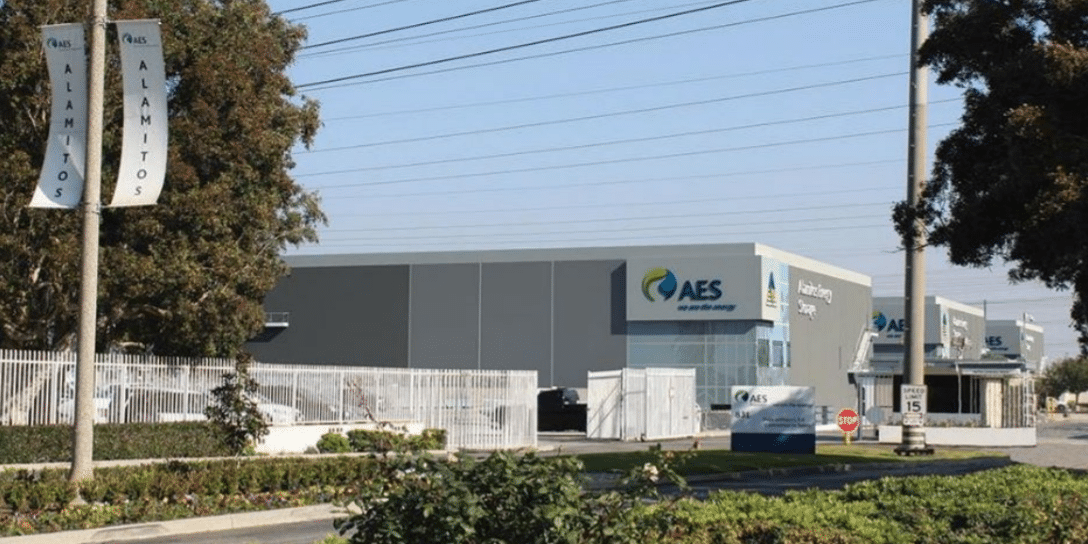







Yes, it’s a cute building, but what about giving us some hard data? How about a detailed discussion of the financials involved and the return on investment? What chemistry is used? What is the useful lifetime? Perhaps I should consider investing in AES, if only I knew more.
AES and Siemens combined into “Fluence”. Just recently a Fluence energy storage system caught fire and an explosion sent firefighters to the hospital. The McMicken storage facility in Surprise AZ, failed violently on 4/19/19. This incident is still under investigation. What has been revealed, so far, is in 2012 another energy storage system by Fluence had a failure in Flagstaff AZ. It was ‘determined’ that the fire suppression system needed to be redesigned. Two things have been unveiled. The batteries used seem to be Samsung SDI (LMO) cells, like those used in the TESLA automobiles. Although TESLA has a battery cooling system, there still have been fires in their battery packs.
This energy storage system in Surprise had telemetry on the energy unit, apparently had a “fire suppression system”, should have had a BMS for the battery cell monitoring and control and had air conditioning units cooling the building. SO, what happened to the telemetry, BMS, fire suppression and air conditioning? IS this another example of Samsung’s batteries not up to task?